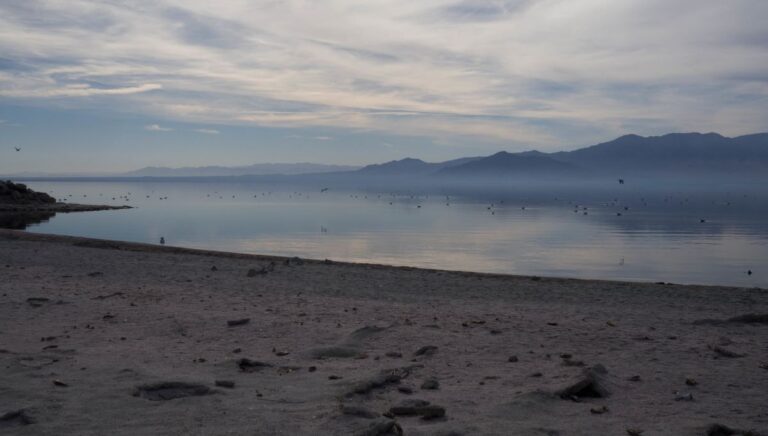Frontline communities in Lithium Valley are cautiously optimistic about the economic potential, but are also concerned about the health and environmental issues mining could create.
When Sonia Herbert, 78, opened a restaurant in Bombay Beach, a small California neighborhood about 80 miles northeast of San Diego, she welcomed the bustle of tourists and locals visiting the Salton Sea shoreline. Located in Imperial County, the lake and its wetlands offer crucial habitats for migratory birds and a refuge for people from the hot desert sun.
But for more than 20 years, she’s watched the once-thriving oasis become increasingly desiccated and polluted with agricultural runoff and waste. Rising salinity, exacerbated by a shrinking freshwater supply from the chronically drought-plagued Colorado River, has made the Salton Sea uninhabitable for many aquatic species. The low-income community’s economy suffered, too, as the flow of visitors slowed.
“People would go water skiing, fishing and swimming,” Herbert remembers. “We used to have thousands of birds come through here migrating and now, you don’t see the big white pelicans anymore.
But recently, the Salton Sea has become a hotbed of industrial activity filled with promise for the future. Beneath its shores lie untouched lithium deposits that experts believe could play a role in the world’s clean energy future.
With the rising demand for lithium during the clean energy transition, the area—also known as “Lithium Valley”—has become an attractive location for major energy companies to explore advanced mining techniques like direct lithium extraction (DLE). Through DLE, companies can directly capture lithium from brine deposits using a special “lithium filter,” bypassing the traditional, resource-intensive open-pit mining and evaporation pond processes.
Companies with billionaire backing are buying in, with the likes of […]
Full article: mavensnotebook.com

